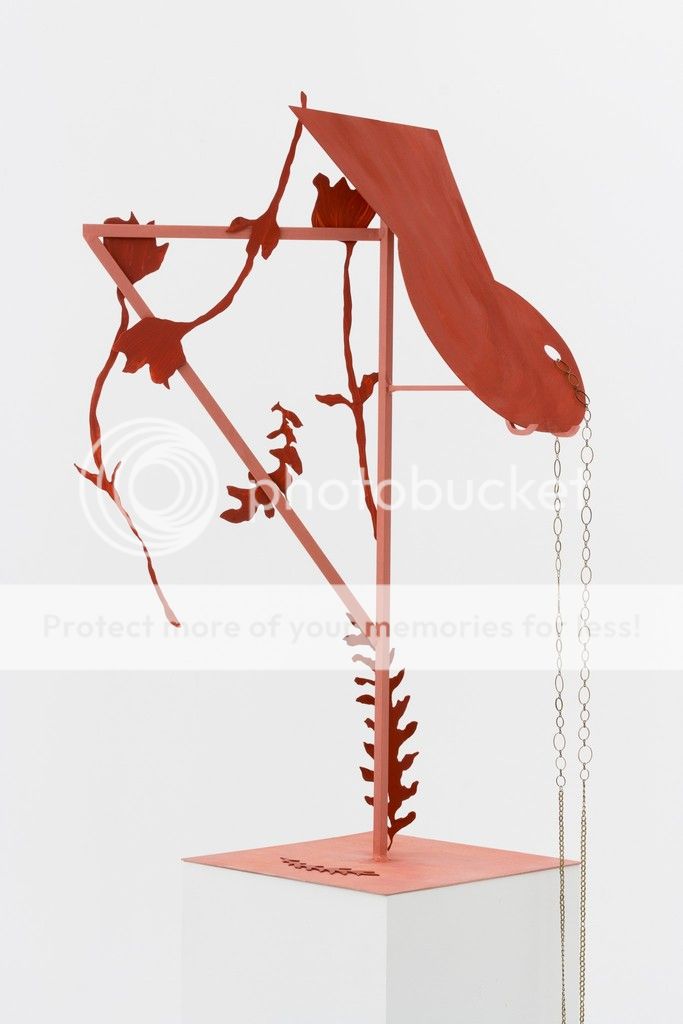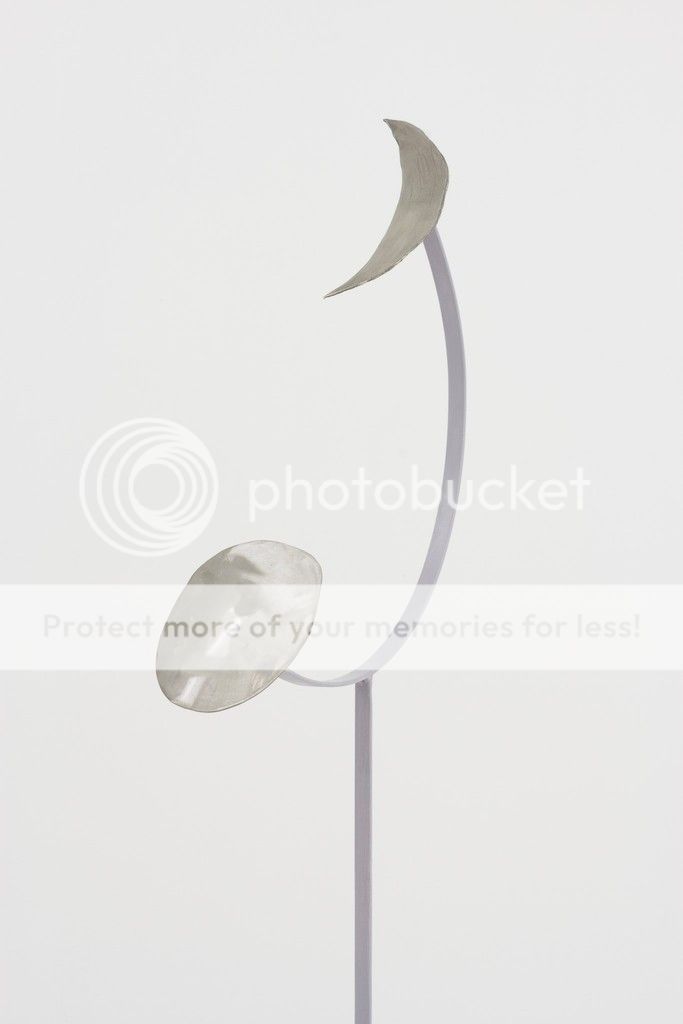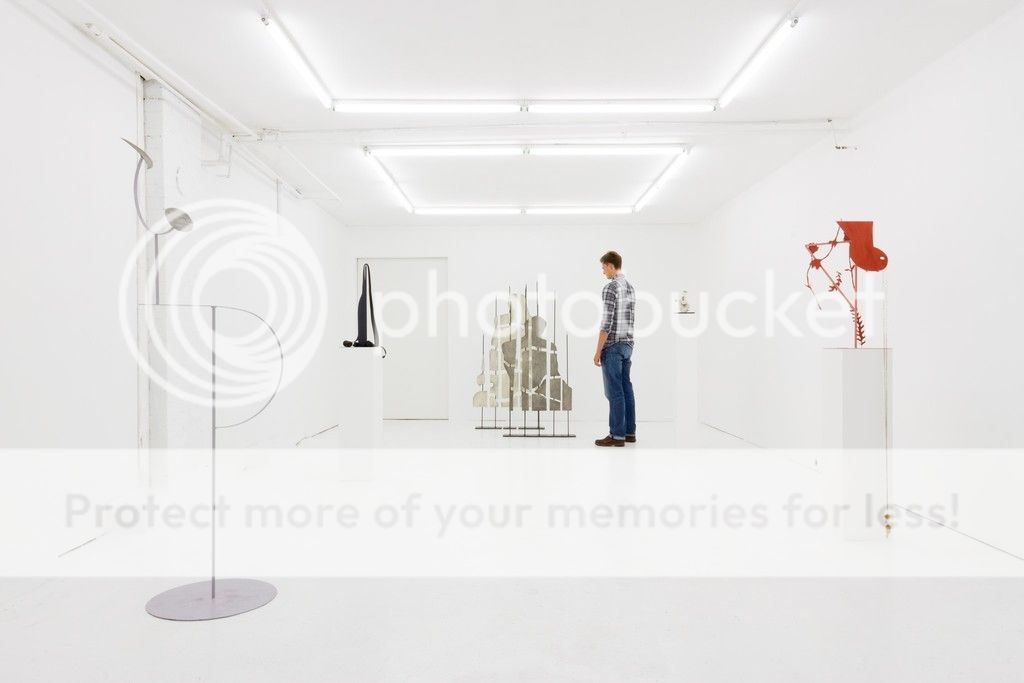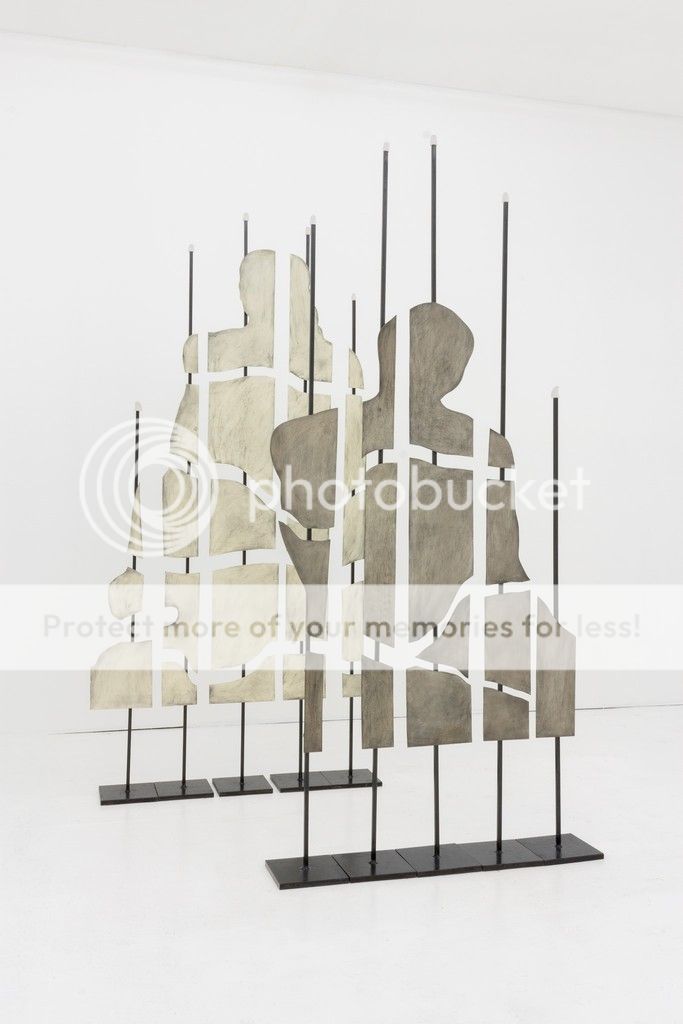Amongst a tsunami of communication, what voices make it through? What histories are revealed and what is left untold?
Artist Vanessa Brown has several stories to share with you. Pull yourself away from the busy hubbub of the city and head over to Hastings Street to spend some contemplative time with Brown's solo exhibition entitled the Hand of Camille at Wil Aballe Art Projects.
The steel sculptures in The Hand of Camille may have been produced over the past year, but the story behind each object predates the work itself by centuries. The exhibition swirls viewers into a recursive meditation on the complexities of value and authenticity. Brown's exhibition also explores art history as well as gender and labour politics.
The artist works intuitively with her materials, her hands and body shaping work as she goes. The resulting sculptures are stunning objects, the exhibition is a must see!
 Still Life (detail), 2016, Vanessa Brown (Image by Dennis Ha)
Still Life (detail), 2016, Vanessa Brown (Image by Dennis Ha)
The history of steel is most industrious, loaded with heavy-industry iconography. When one thinks of steel, the mind projects forth images of skyscrapers, railroads, engines, and bridges. Hard edged, sharp, solid and heavy. Can steel be something ‘other’? Can it look and feel like ribbon or paper? Can it occupy a different state; a more embodied one where its’ malleable and pliable qualities are more apparent? These are but a few of the questions that Brown has been working through as she continues to work with steel in her practice.
Brown is hyper-aware of the hand of the artist as she has worked as both artist and installer for other artists over the years. Where would Rembrandt be without his studio assistants to paint drapery, where would Damian Hirst be without his butterfly painting studio technicians? Where would Rodin be without Camille Claudel who sculpted many aspects of his sculptures. Brown specifically references Camille’s hand in the exhibition as Claudel’s work and life-story resonates with Brown's life and practice.
 Moon Cycle (detail), 2016, Vanessa Brown (Image by Dennis Ha)
Moon Cycle (detail), 2016, Vanessa Brown (Image by Dennis Ha)
As Brown researched Claudel’s life-story, the research, Brown's work history and art practice converged in many ways. What emerged was this exhibition where the divisions between craft, hobby, design, art, and sculpture are muddled. Brown also meditates on the differences and similarities between artist, assistant, technician and craftsperson. This reflects back through some of the aesthetic pairings and juxtapositions in the exhibition.
Brown returns continuously to the idea of claiming space, a key concept underpins many ideas in the work. Camille Claudel fought to claim space as a female in a male dominated sculpture realm in the 1800-1900’s. Although some conditions for female artists have improved, many preconceived ideas and challenges remain. Having a voice as a female sculptor has also worked its way into the works consciously and subconsciously. Today, Brown also claims space in the present for her personal artist practice, one that is separate from her ‘day job’ in the arts. Another fascinating claiming of space by the artist is that of the physicality and ownership of labour in her work, it is an embodied practice. Brown makes sculptures that are: of, for, and from the body.
 The Hand of Camille (installation view), 2016, Vanessa Brown. Exhibition at Wil Aballe Art Projects (Image by Dennis Ha)
The Hand of Camille (installation view), 2016, Vanessa Brown. Exhibition at Wil Aballe Art Projects (Image by Dennis Ha)
There are many beautiful gestures in this exhibition.
The artist preserved the trace of a hand that rolled a few meters of ribbon in one sculpture. A silent and visible trace of invisible labour. Brown also highlighted her hand in the production and process by incorporating Ultracal casts of her fingertips in one work, and her whole hand in another.
The exhibition installation resembles a fixed-point perspective composition, one where our eyes are centrally drawn to the key sculpture titled The Eternal Idol: The Left Hand, The Right Hand. Brown's sculptures are three dimensional, but often speak of flatness. Each work is set up so that it is staggered one after the other, like layers of a collage, or cascading mountains in a landscape. But on the horizon, it is not the sun captivating our attention, we are drawn to a pair of hands, that are flat, fractured and larger than life. The fragments/ligatures also resemble a shadow of two figures, linked together in a monochromatic wash and fixed in place, upright.
We should listen more to our hands. In gestures, a multitude of insight is revealed.
Vanessa Brown's exhibition The Hand of Camille closes on October 22nd.
For more exhibition information visit: http://www.waapart.com/. To visit the exhibition head to: Wil Aballe Art Projects (WAAP): 688 East Hastings. WAAP is open from Tuesday - Saturday 11am-5pm or by appointment.
For more information about Vanessa Brown visit: http://vanessa-brown.com/Information
 Eternal Idol: The Left Hand, The Right Hand (after Rodin), 2016, Vanessa Brown (Image by Dennis Ha)
Eternal Idol: The Left Hand, The Right Hand (after Rodin), 2016, Vanessa Brown (Image by Dennis Ha)


